A Guide to First Aid for Dog Owners: What to do when your No. 1 bud goes down in the field...

In many cases, merely keeping your dog calm in the wake of suffering an injury can be crucial in minimizing damage to your companion. Photo: Bennett Barthelemy/Tandem
We are HUGE fans of Outside Magazine and can usually be found on their website reading one of their million interesting articles. Recently this popped up! A guide to First-Aid for pet owners written by Jason Daley Interestingly enough we are knee-deep in designing an incredible First-Aid Kit for your canine compadre like you've never seen.
Dogs get injured just like people do but the opposable thumb problem still has not been solved by scientists or evolution which makes band-aids difficult to apply. Here is what Outside Magazine says in their article from June 30th, 2015:
--------------
Even adventure dogs slip up sometimes, and canine first aid isn't exactly common knowledge. Here’s how to respond to five injuries—and how to keep your furry wingman safe down the road.
Broken LegFirst-Aid: Fractures in dogs are uncommon, unless they’re hit by a car or their owner falls on top of them while hiking (more common than you’d think). Sprains and strains are more likely, though there’s no real way to tell the difference in the field, and treatment is the same. How to address the injury depends on the location of the fracture or sprain, but it’s similar to how you’d treat a human: splint it, wrap it tightly with a T-shirt or bandage, and carry the animal to a vet. Aspirin can help with pain during evacuation.
Beware: Keep your dog calm to prevent the bone from becoming more displaced or from damaging nearby arteries, muscles, or nerves. For lower-leg fractures, Randy Acker, a vet at the Sun Valley Animal Center and author of the Field Guide to Dog First Aid, suggests learning the Robert Jones bandaging technique, which will splint and immobilize the leg, preventing further damage. Breaking a big bone like the femur can lead to shock, which includes rapid heartbeat and collapse. This is a serious emergency and requires immediate vet care.
Recovery: A broken bone takes four to six weeks to heal—if you can keep your dog relatively immobile. A dog that can’t sit still will need more time.
Ounce of Prevention: Keep your dog leashed if you’re entering an area with automobile traffic or heavy bicycle use. And if you trip, try not to land on your best friend.
Sliced Paw
First-Aid: Apply pressure to the wound, and use a tourniquet—very briefly—to get the blood flow under control. Once the bleeding stops, pack the paw with a quarter- or half-inch of padding. A torn up T-shirt works well. Secure the padding around the paw with electrical tape or VetWrap, a type of bandaging tape sold at large pet stores. “You can’t really overdo it with the padding,” says Chuck DeVinne, a vet in New Hampshire and author of the Orvis Guide to First Aid for Sporting Dogs.
Beware: It’s up to you to keep your dog from making the wound worse—active breeds and hunting dogs sometimes refuse to slow down, even with a gaping hole in their paw. “My dog will just keep going,” explains DeVinne. “I’d lose him to blood loss if I didn’t stop him from exercising.”
Recovery: The irregular skin on paw pads makes them difficult to suture, but it’s worthwhile to get the cut sewn up and put the dog on a round of systemic antibiotics to prevent infection. Paws are notoriously slow healers, mending from the inside out at a rate of about an eight of an inch per week. That means, depending on the depth of the cut, it could be weeks before the pad is healed. Until then, do your best to keep the dog from intense exercise.
Ounce of Protection: Booties can prevent foot problems on the trail, but be careful—ill-fitting ones can rub or chafe, causing bigger problems than the cuts they’re supposed to help avoid.

Snout Full of Porcupine Quills
First-Aid: If it’s less than a dozen, you can probably remove them yourself using pliers or a pair of fishing hemostats. Wait until the dog settles down (administering a dose of Valium or restraining their legs with duct tape can help, says Acker), then hold the skin around the base of the quill with one hand and use the pliers to pull the pricker straight out. More than a dozen? Have a vet do it. And though it may seem cruel, there’s no rush—the quills can stay in there a day or two without causing permanent damage.
Beware: Acker says never break off the quills, since they tend to travel deeper into the skin, where they’re hard to find. “They can wander up into the nose, into the eyes, or into lungs,” he warns. “They carry bacteria and can make abscesses.”
Recovery: Go to the vet for a systemic antibiotic to prevent infections. In some areas, a rabies booster is required if a dog comes into physical contact with a wild animal.
Ounce of Prevention: It’s hard to train your dog to avoid porkies. Acker has one patient who’s been in nine times for quill removal. If there is a problem porcupine in your neighborhood, soak a piece of wood in salt water and place it in a Hav-A-Hart trap. (Check local nuisance-animal laws first to determine if catching and removing is permitted.) The salty wood will attract porcupines but not skunks or other critters. Release it far enough away that it won’t waddle back to your doghouse.
Poisoning
First-Aid: In rural areas, dogs can get into bait set by trappers, mushrooms, rotten animal carcasses, and rodenticides around outbuildings. If you suspect your dog has swallowed a toxin and cell service is available, call the poison control hotline: 800-213-6680. If you are sure the toxin is not a petroleum product, DeVinne recommends inducing vomiting using hydrogen peroxide at one tablespoon per 30 pounds of body weight. If this doesn’t work, try a teaspoon of salt mixed with a little water to a slimy consistency. A few hours after the vomiting has stopped, one tablespoon of Pepto-Bismol per 30 pounds of body weight can be given to help with intestinal inflammation.
Beware: If it’s more than a couple of hours before you discover the poisoning, or if you suspect you haven’t gotten all the toxins out, get your dog to the vet as soon as possible. And bring a any evidence that might identify the toxin, such as a label, a photo of the toxin, or even a bit of the vomit. This will help your vet determine the antidote.
Recovery: It’s a good idea to visit the vet even if your dog disgorged the poison. Keep an eye on its bowel movements, looking for blood or anything unusual. If the dog is lethargic, its abdomen sore, or its body cool to the touch, seek medical care right away.
Ounce of Prevention: “Frankly, with all practicality, just keep an eye on them,” says DeVinne. “If they are near something that doesn’t look good, get them away.” Be careful about storing dog food in sheds our outbuildings—rodents often hoard treats in it, including rat poison.
Heat Exhaustion
First-Aid: The initial challenge here is diagnosis. If a dog open-mouth pants constantly with its tongue out and doesn’t seem to be able to close its mouth, it may be suffering from heat exhaustion. Some dogs lie down and refuse to move. Others walk like they are moving through thick mud. Check the ears—if they’re unusually hot, this is a good sign the dog is overheating. As soon as possible, cool it off. One quick method is to get its legs and belly in a stream or other water source for half an hour to an hour. Then, for the rest of the day, rest every 10 or 15 minutes, and give your dog plenty of water to drink.
Beware: Heat exhaustion can cause a dog's blood to thicken. If veterinary help is not available and the dog is not vomiting and not drinking normally, DeVine suggest a single tablet of regular-size adult aspirin (300mg) for a 50-pound pooch.
Recovery: Recovering from heat stroke can be a long process. Don’t exercise your dog for several days, and take it to the vet for a blood test to make sure there’s been no injury to internal organs.
Ounce of Prevention: Learn your dog’s limits, and don’t overwork it on hot days. DeVinne urges extra caution with dogs living in cooler northern climates. “If you can’t comfortably wear a sweatshirt while exercising,” he cautions, “then it’s too hot for your dog to exercise.”
--------------
Thanks for reading and we hope you keep your dog safe out there this Summer!
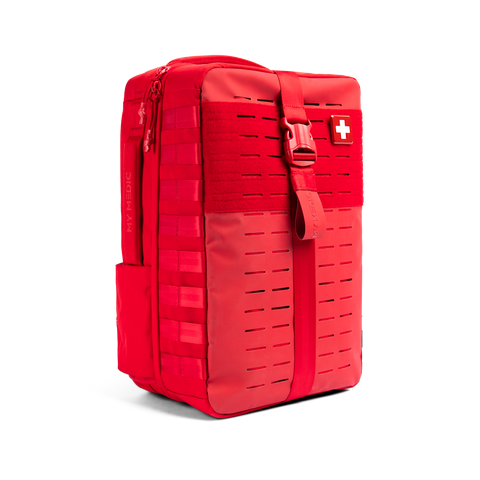 NEW ARRIVALS
NEW ARRIVALS
 BEST SELLERS
BEST SELLERS
 SUPERSKIN™
SUPERSKIN™
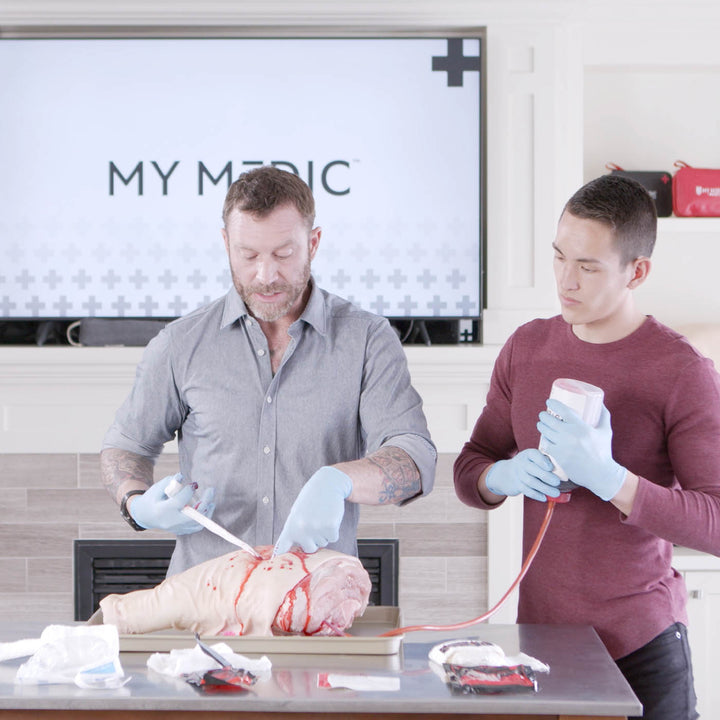 COURSES
COURSES
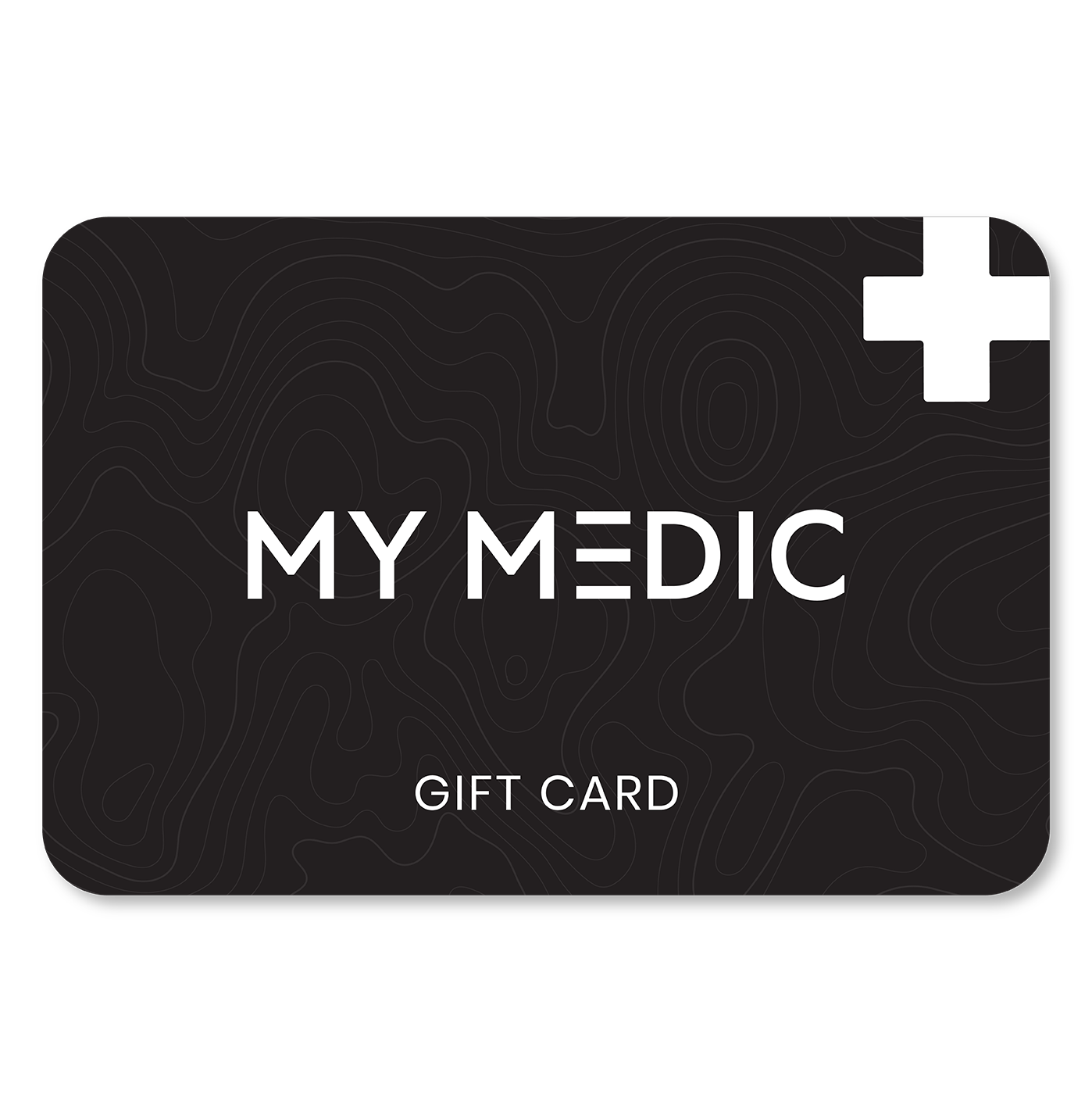 REWARDS
REWARDS
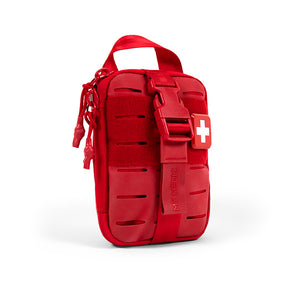 The MyFAK Collection
The MyFAK Collection
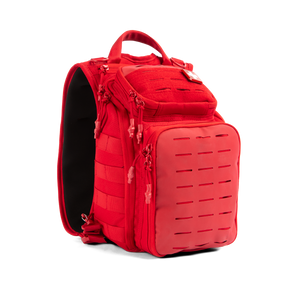 Specialty
Specialty
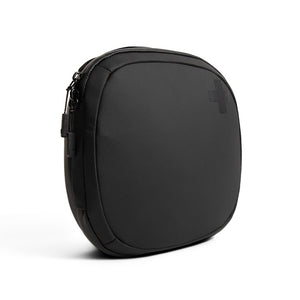 The Ready Collection
The Ready Collection
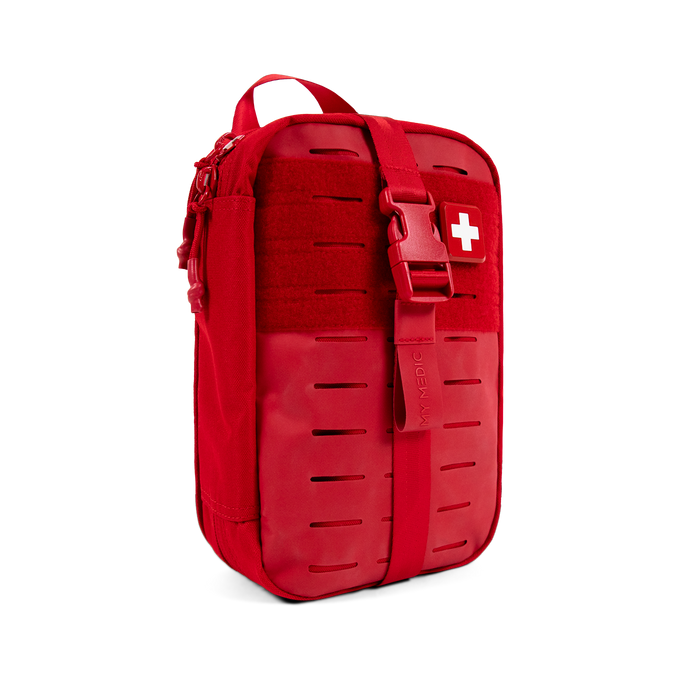
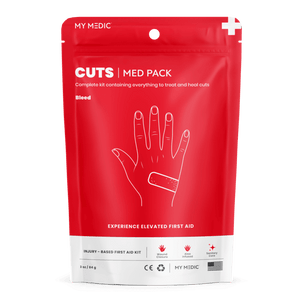 BLEED
BLEED
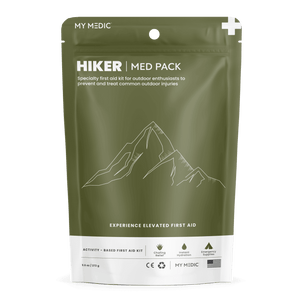 OUTDOOR
OUTDOOR
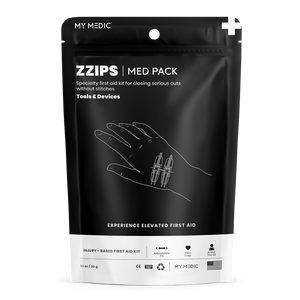 TOOLS & DEVICES
TOOLS & DEVICES
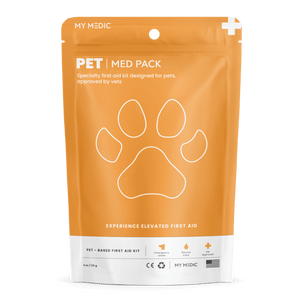 SPECIALTY
SPECIALTY
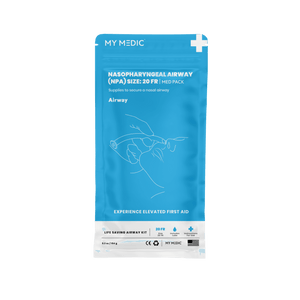 AIRWAY
AIRWAY
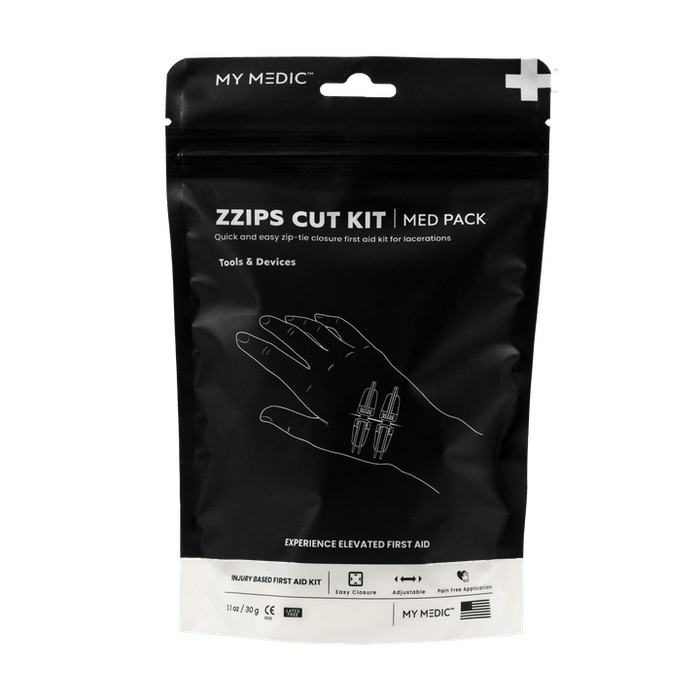
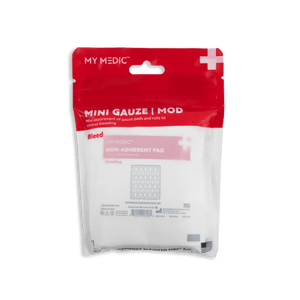 BLEED
BLEED
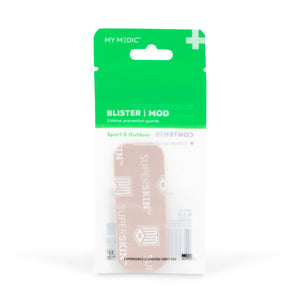 OUTDOOR
OUTDOOR
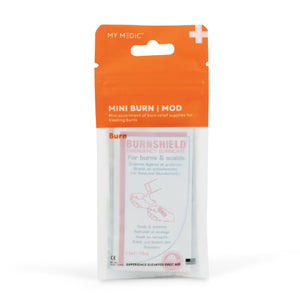 BURN
BURN
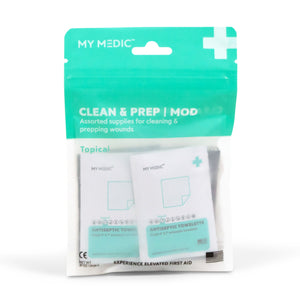 TOPICAL
TOPICAL
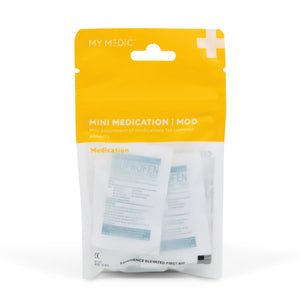 MEDICATION
MEDICATION
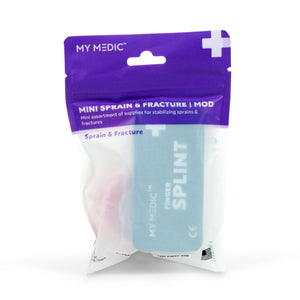 SPRAIN & FRACTURE
SPRAIN & FRACTURE
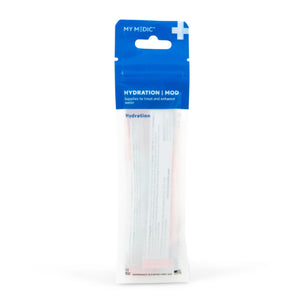 HYDRATION
HYDRATION
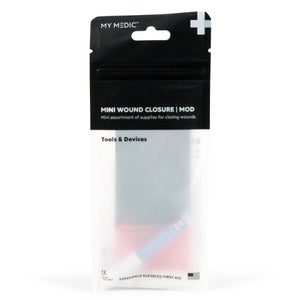 TOOLS & DEVICES
TOOLS & DEVICES
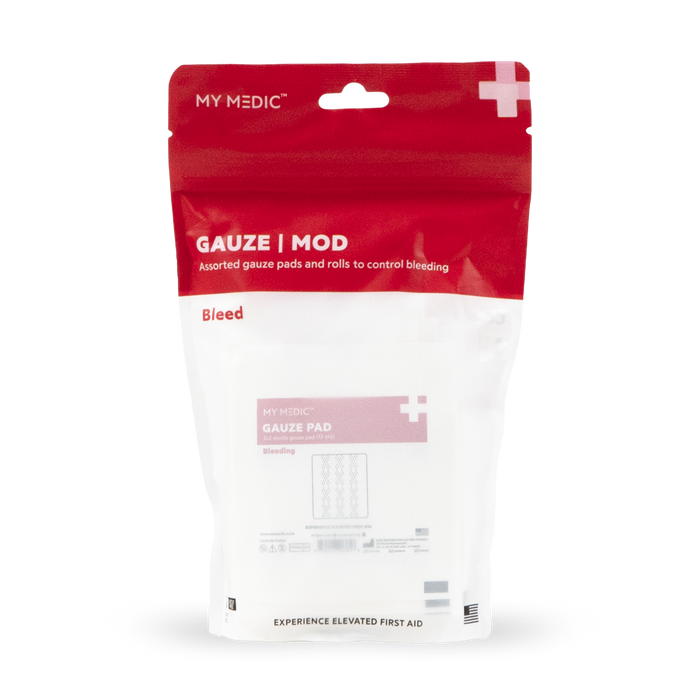
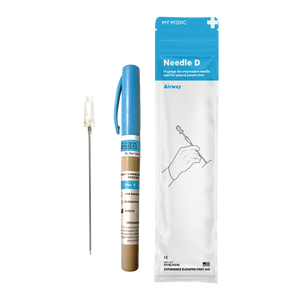 Supply Categories
Supply Categories
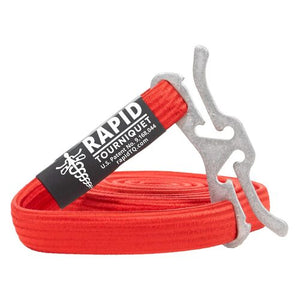 Top Sellers
Top Sellers
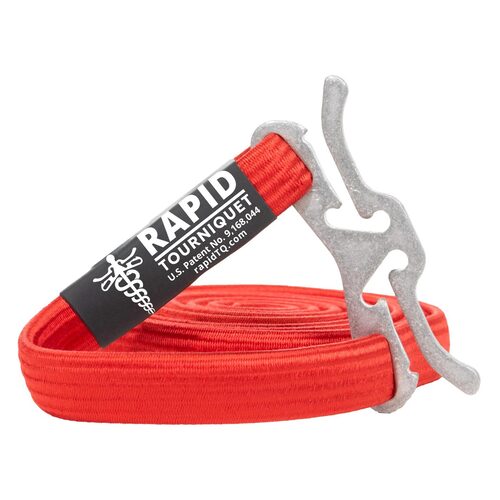






I want the first canine first aid kit when they come in. Pls don’t forget the little guys: Yorkies, Malteses, and chihuahuas. They like adventure too.
Leave a comment